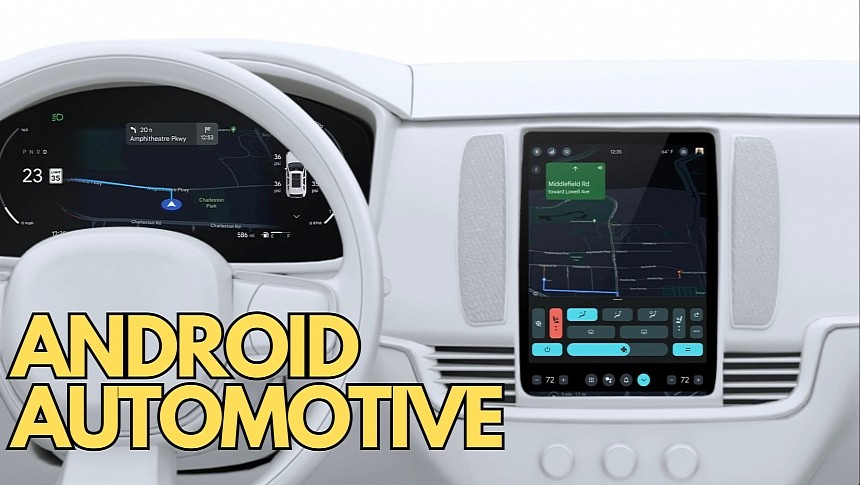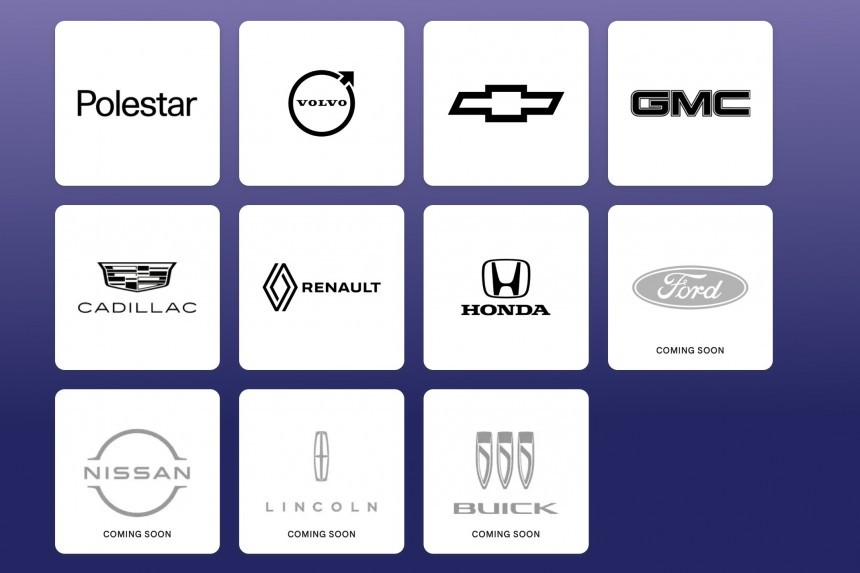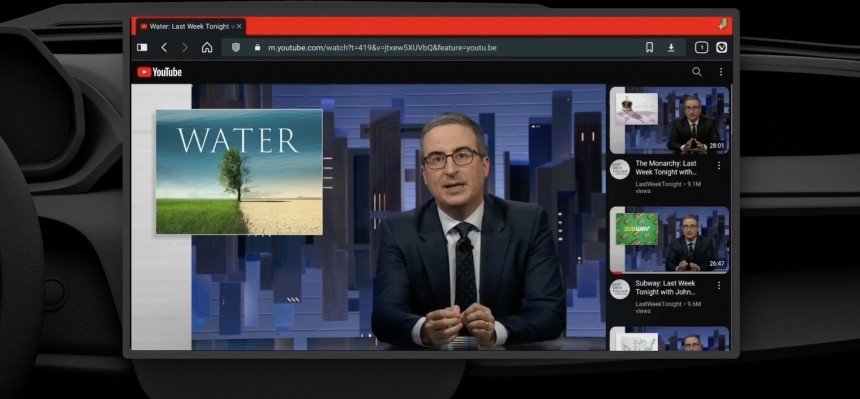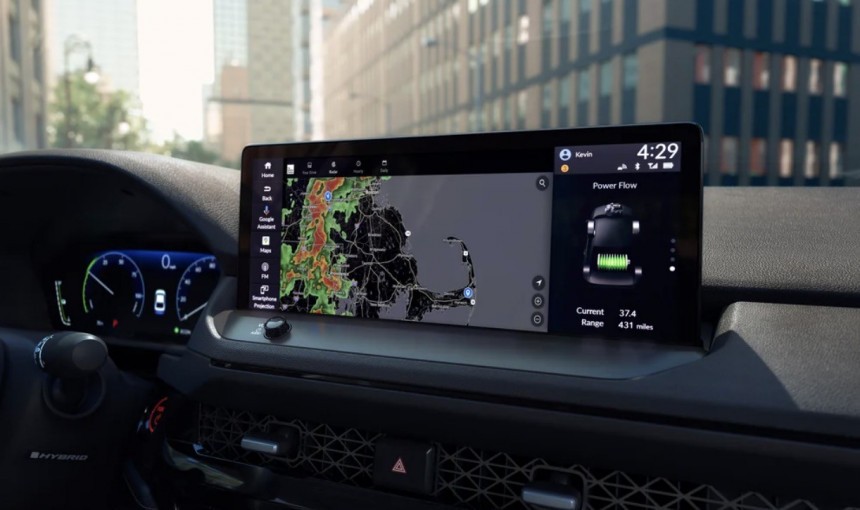Android Auto, Android Automotive, and Google Automotive Services spearhead Google's push in the automotive space.
While the terminology could confuse less tech-savvy users, each product has a clear objective, offering distinct features and playing an integral role in the company's long-term strategy.
Android Automotive is an embedded operating system whose purpose is to power the infotainment capabilities in a car. Only new-generation models are supported, and compared to Android Auto, it doesn't need a mobile phone to run.
However, the carmaker must install Android Automotive from the factory and work with Google to make it happen. Announced in March 2017, Android Automotive's adoption made slow progress. The number of brands currently offering built-in Google services is short and includes only nine names, namely Polestar, Volvo, Chevrolet, GMC, Cadillac, Renault, and Honda.
Google has also revealed the next four big names to join the Android Automotive party. They are Ford, Nissan, Lincoln, and Buick, all expected to launch cars with Google built-in later this year.
Android Auto and Android Automotive might look like similar products, but they're different solutions that can be offered side-by-side in a car.
Android Auto is a phone mirroring platform that relies on a mobile device to project apps to the infotainment screen. Android Automotive powers the infotainment screen.
Carmakers have the technical means to offer Android Auto and Android Automotive in their cars to give customers more choices. General Motors caused massive controversy last year when it announced an exclusive focus on Android Automotive, deciding to block Android Auto and CarPlay in its future models.
While it's technically possible to offer all these products, General Motors wants to go all-in Android Automotive and no longer offer Android Auto.
Several carmakers have already expressed their commitment to retaining Android Auto and CarPlay support in future models, so out of the brands already confirmed to adopt Android Automotive, only the GM-owned Buick is likely to block Android Auto. Ford, Lincoln, and Nissan could continue offering phone mirroring support in cars fitted with Android Automotive.
The number one benefit of using Android Automotive is the integrated experience, as Google's services and the running apps can access more vehicle data.
Google Maps is the best example, as the navigation app can monitor the battery and suggest charging stops when the level is low. Google Maps can automatically look for routes that include charging stations if the battery level doesn't allow the vehicle to reach the defined destination.
Google Assistant can control more vehicle functions, including the climate control system. Users can change the cabin temperature with voice commands without touching the infotainment screen.
Android Automotive also comes with a browser, letting users navigate the web like on a computer. The system already has two big browsers – Vivaldi and Google Chrome, and considering that most cars fitted with Android Automotive sport large displays, browsing the web is a very convenient experience. However, browsing is only allowed when the vehicle is parked, so access to the apps is restricted once you start driving.
From a carmaker's perspective, Android Automotive gives companies new opportunities, including building a subscription-based model that would eventually allow them to turn the infotainment system into a money-making machine.
General Motors has been accused of blocking Android Auto and migrating to Android Automotive specifically to generate revenue with the infotainment system. While the company mostly sidestepped the topic, General Motors' executives said the transition to Android Automotive paved the way for more advanced functionality in its cars.
Android Automotive allows carmakers to customize the look and feel of the operating system, retaining their brand identity. It means each brand can create its own skin for Android Automotive, and while the experience could look different from another brand, the underlying software is still Google's software.
Car manufacturers can also adopt Android Automotive without Google Automotive Services. BMW is one of the companies that embraced this strategy because it didn't want to provide the carmaker with access to vehicle data. Without GAS, Android Automotive doesn't integrate Google Maps, Google Assistant, the Play Store, and other Google services, so carmakers must develop alternatives, including third-party app stores, to let users download and install apps.
Android Automotive doesn't currently have a competitor in the Apple world. CarPlay is still an alternative to Android Auto, but Apple has already announced a new-generation experience that will launch in Porsche and Aston Martin cars later this year. CarPlay 2.0 will also allow carmakers to customize the look and feel of the operating system, with the system to use all displays in the cabin and create more consistency with an iPhone.
Apple has already promised an infotainment revolution with the new CarPlay, and several Android Automotive adopters are also likely to explore the iPhone maker's offering. Ford and Honda are some of the biggest names likely to adopt CarPlay 2.0 when it becomes available later this year.
Android Automotive is an embedded operating system whose purpose is to power the infotainment capabilities in a car. Only new-generation models are supported, and compared to Android Auto, it doesn't need a mobile phone to run.
However, the carmaker must install Android Automotive from the factory and work with Google to make it happen. Announced in March 2017, Android Automotive's adoption made slow progress. The number of brands currently offering built-in Google services is short and includes only nine names, namely Polestar, Volvo, Chevrolet, GMC, Cadillac, Renault, and Honda.
Google has also revealed the next four big names to join the Android Automotive party. They are Ford, Nissan, Lincoln, and Buick, all expected to launch cars with Google built-in later this year.
Android Auto and the Android Automotive push
Android Auto is a phone mirroring platform that relies on a mobile device to project apps to the infotainment screen. Android Automotive powers the infotainment screen.
Carmakers have the technical means to offer Android Auto and Android Automotive in their cars to give customers more choices. General Motors caused massive controversy last year when it announced an exclusive focus on Android Automotive, deciding to block Android Auto and CarPlay in its future models.
While it's technically possible to offer all these products, General Motors wants to go all-in Android Automotive and no longer offer Android Auto.
Several carmakers have already expressed their commitment to retaining Android Auto and CarPlay support in future models, so out of the brands already confirmed to adopt Android Automotive, only the GM-owned Buick is likely to block Android Auto. Ford, Lincoln, and Nissan could continue offering phone mirroring support in cars fitted with Android Automotive.
The Android Automotive benefits
Google Maps is the best example, as the navigation app can monitor the battery and suggest charging stops when the level is low. Google Maps can automatically look for routes that include charging stations if the battery level doesn't allow the vehicle to reach the defined destination.
Google Assistant can control more vehicle functions, including the climate control system. Users can change the cabin temperature with voice commands without touching the infotainment screen.
Android Automotive also comes with a browser, letting users navigate the web like on a computer. The system already has two big browsers – Vivaldi and Google Chrome, and considering that most cars fitted with Android Automotive sport large displays, browsing the web is a very convenient experience. However, browsing is only allowed when the vehicle is parked, so access to the apps is restricted once you start driving.
From a carmaker's perspective, Android Automotive gives companies new opportunities, including building a subscription-based model that would eventually allow them to turn the infotainment system into a money-making machine.
General Motors has been accused of blocking Android Auto and migrating to Android Automotive specifically to generate revenue with the infotainment system. While the company mostly sidestepped the topic, General Motors' executives said the transition to Android Automotive paved the way for more advanced functionality in its cars.
Android Automotive allows carmakers to customize the look and feel of the operating system, retaining their brand identity. It means each brand can create its own skin for Android Automotive, and while the experience could look different from another brand, the underlying software is still Google's software.
Android Automotive doesn't currently have a competitor in the Apple world. CarPlay is still an alternative to Android Auto, but Apple has already announced a new-generation experience that will launch in Porsche and Aston Martin cars later this year. CarPlay 2.0 will also allow carmakers to customize the look and feel of the operating system, with the system to use all displays in the cabin and create more consistency with an iPhone.
Apple has already promised an infotainment revolution with the new CarPlay, and several Android Automotive adopters are also likely to explore the iPhone maker's offering. Ford and Honda are some of the biggest names likely to adopt CarPlay 2.0 when it becomes available later this year.

















